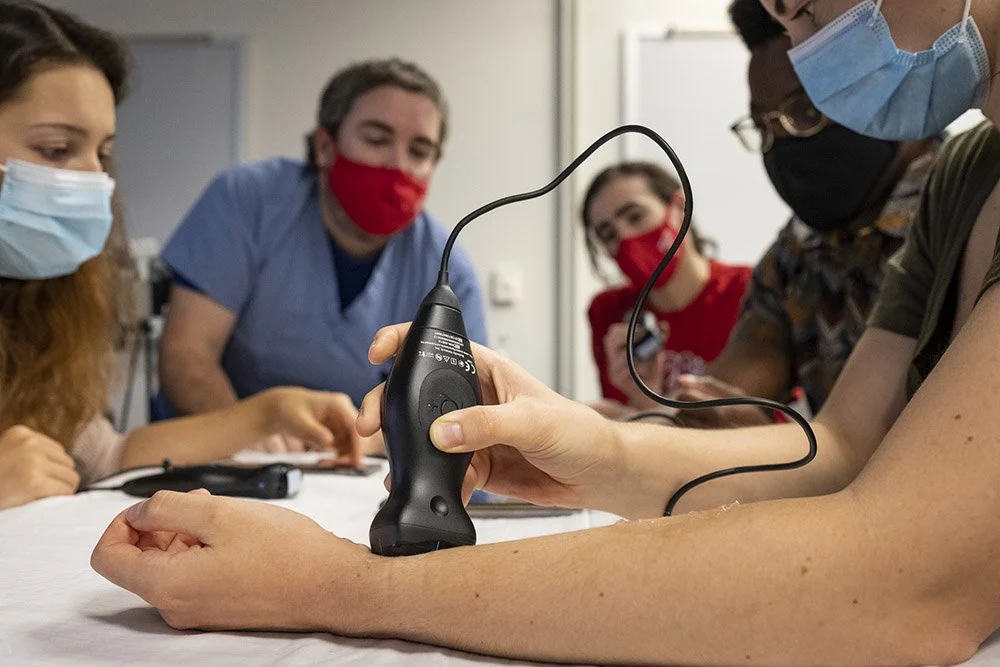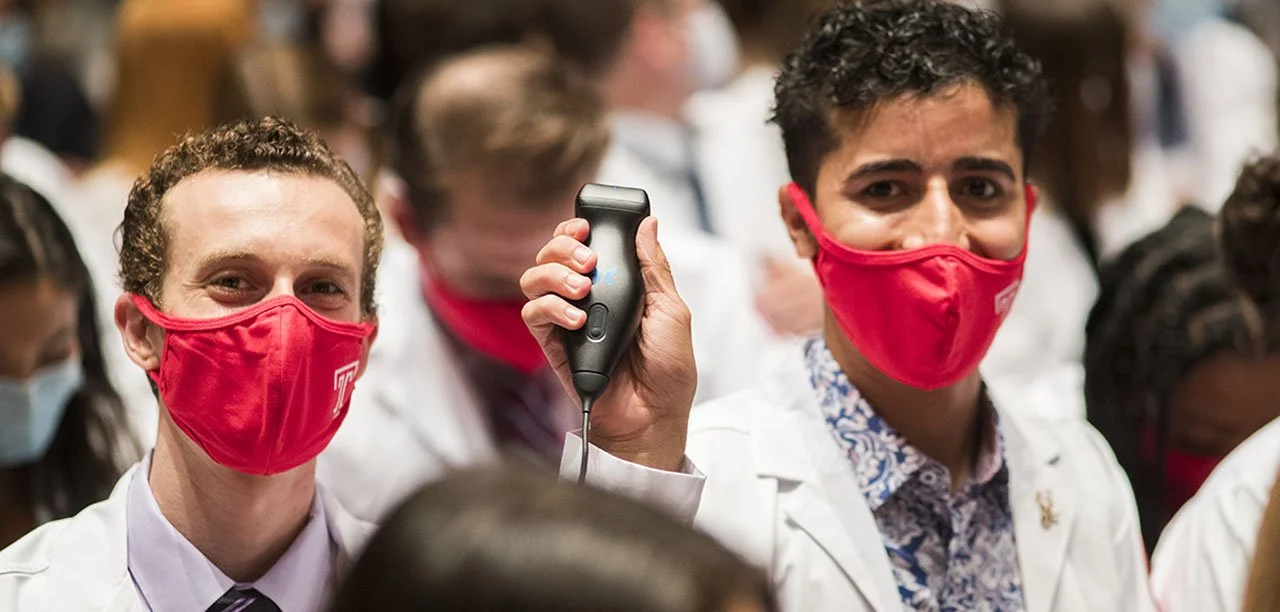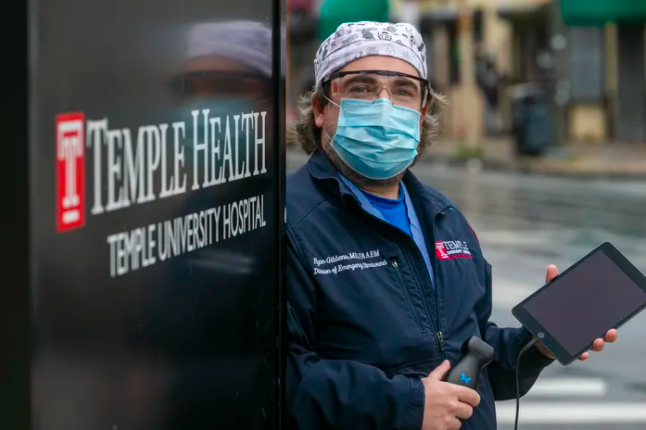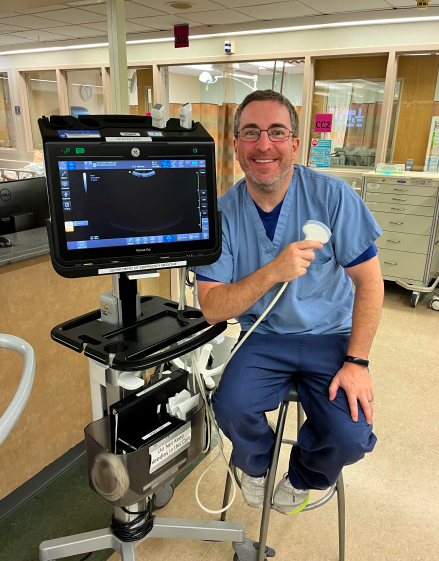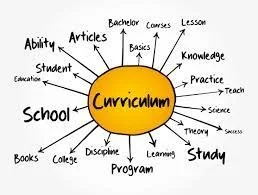Ultrasound in Medical Education Curriculum
Background
The use of point of care ultrasound has become widespread across nearly every specialty in medicine. It is an accurate, noninvasive, portable diagnostic modality, which will only continue to expand as it becomes more cost effective and user-friendly. Bedside ultrasound augments the physical exam and the physician’s ability to safely, efficiently, and accurately diagnosis and treatment his or her patients without additional radiation or cost. In fact, the Agency for Healthcare Quality and Research recommends its routine use given its excellent safety profile. One of the challenges to routine ultrasound utilization is the lack of training.
The goal of medical school is to train competent, compassionate physicians who effectively communicate and collaborate within a multidisciplinary system. In 2014, the AAMC released the 13 Core Entrustable Professional Activities for Entering Residency to help achieve these goals. Of those thirteen, ultrasound directly supplements the nine listed below.
EPA 1: Gather a history and perform a physical examination
EPA 2: Prioritize a differential diagnosis following a clinical encounter
EPA 3: Recommend and interpret common diagnostic and screening tests
EPA 7: Form clinical questions and retrieve evidence to advance patient care
EPA 9: Collaborate as a member of an inter-professional team
EPA 10: Recognize patients requiring urgent/emergent care & initiate evaluation & management
EPA 11: Obtain informed consent for tests and/or procedures
EPA 12: Perform general procedures of a physician
EPA 13: Identify system failures and contribute to a culture of safety and improvement
Numerous studies have demonstrated that point of care ultrasound enhances traditional learning, student fulfillment, and confidence; improves diagnostic and procedural skills; fosters patient care, safety and satisfaction; and provides a foundation for advanced specialty specific ultrasound applications.
The number of specialties utilizing ultrasound is expanding continuously. In fact, six specialties and subspecialties have formal ACGME requirements for ultrasound training. This number will continue to expand as ultrasound becomes more cost effective, portable, and user friendly; not to mention as studies continue to demonstrate its ability to augment the physical exam and other diagnostic modalities.
Radiology*
Cardiology*
Obstetrics and Gynecology*
Emergency Medicine*
Urology*
Critical Care Medicine*
General Surgery
Family Practice
Anesthesiology
Internal Medicine
Ophthalmology
Neurology
*ACGME requirement
Numerous medical organizations [DJK1] have organized subcommittees to champion the implementation of ultrasound education as a core competency within medical schools nationwide. These include the following:
American Institute of Ultrasound in Medicine
Society of Ultrasound in Medical Education & World Interactive Network Focused on Critical Ultrasound
International Consensus Conference on Ultrasound in Medical Education
Annual World Congress on Ultrasound in Medical Education (since 2011)
Over 100 medical schools participating
Association of University Radiologists
Alliance of Medical Student Educators & Clinical Educators in Radiology
Society of Radiologists in Ultrasound
American College of Emergency Physicians
Society of Academic Emergency Medicine
At the Lewis Katz School of Medicine at Temple University, we have developed a longitudinal 4-year POCUS curriculum utilizing handheld devices to augment our student’s education. See below for a detailed overview.
Point-of-Contact
Ryan C. Gibbons, MD, FAAEM, FACEP, FAIUM, FAEMUS Associate Professor of Emergency Medicine Assistant Dean of Faculty Development John M. Daly, MD & Measey Foundation Endowed Professor in Medical Education Innovation Director, Ultrasound in UME Lewis Katz School of Medicine at Temple University
Email: ryan.gibbons@tuhs.temple.edu
